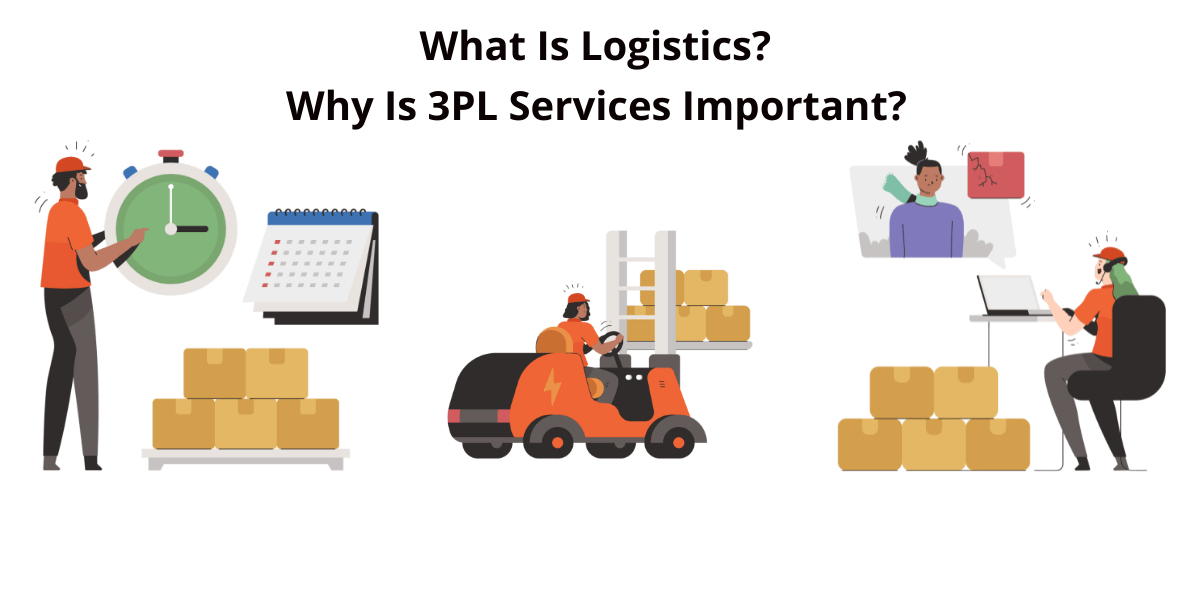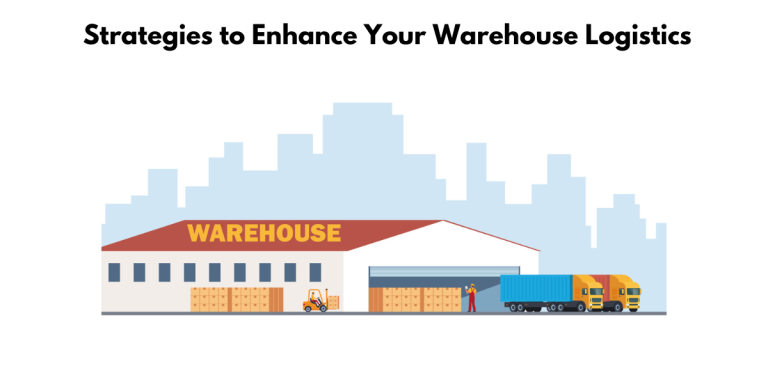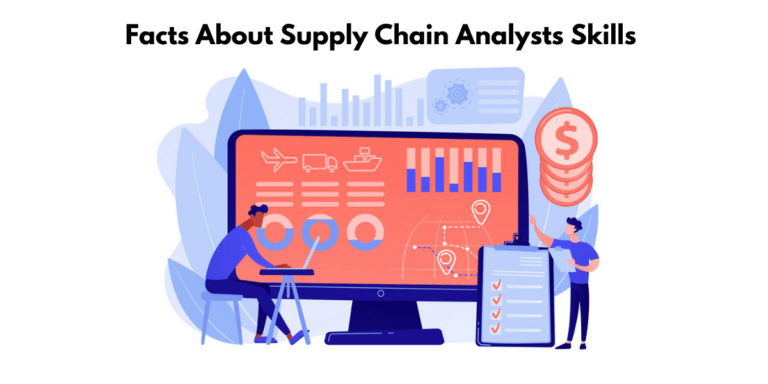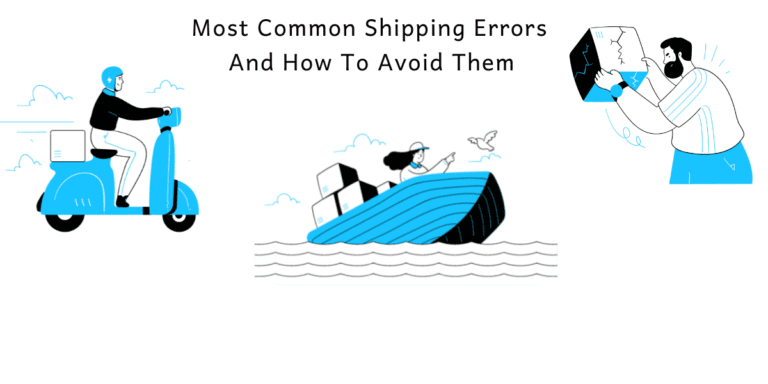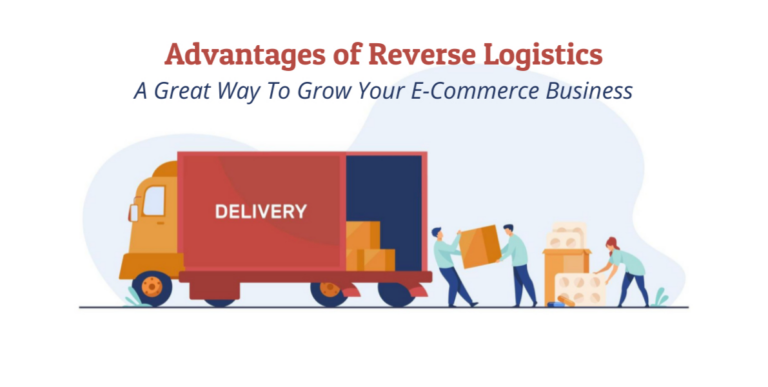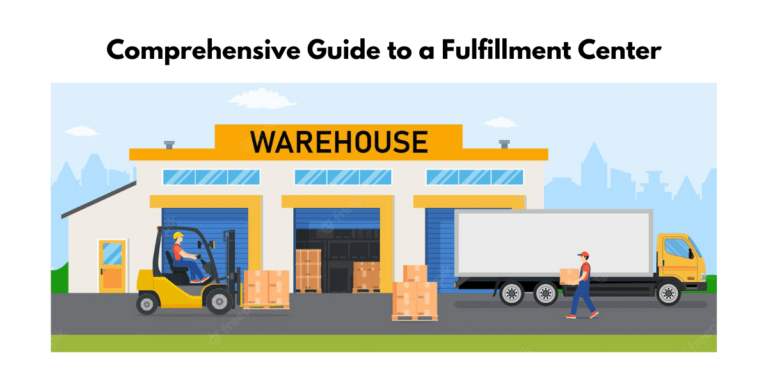Warehouse and Logistics: Everything You Need To Know About 3PL Services
Everything You Need To Know About Outsourcing Logistics Services
Global supply chains are vulnerable to pandemics and natural disasters. A third-party logistics provider (3PL) helps overcome challenges and delays by providing end-to-end services that help the shipper plan for future contingencies to protect their supply chain logistics.
Although inventory planning was adequate at the start of 2019, it quickly began to deplete due to labor shortage and COVID-19 cases increased due to pandemic concerns. Companies needed contingency plans for their supply chains not to be affected by these disruptions.
Companies partner with 3PL’s to provide inventory management, near sourcing and planning. In particular, the 3PL warehouse needs to be balanced while maintaining a consistent flow of goods. This can be achieved by using advanced technologies such as RFID tags that allow for data-driven insights when managing inventories in real-time and creating forecasting tools that will enable companies to better plan their supply chain strategy before they go into production.
The 3PL industry is quickly growing in Southeast Asia, but logistics companies need to build relationships with other manufacturers as the manufacturing boom continues to expand. When importing products from overseas, you must avoid delays at major ports and borders by including customs paperwork in your shipments. This will help avoid tax levies on products and prevent unnecessary transport due to importation procedures.
To keep shipping costs low while maintaining high-quality standards, transportation managers need access close-to-sourced or shipped-from overseas. This will help avoid delays in the manufacturing process and quickly respond when shipments experience a significant lag time.
In general, 3PL providers are essential in the logistics process. They mitigate delays and wait times for deliveries by providing third-party services to companies such as warehousing, distribution centers, freight forwarding, customs clearance and more.
3PLs can also reduce costs associated with mixed goods shipments because they have a strong network of suppliers who will ship at their own expense or provide discounts on shipping fees so that 3PLs don’t have to take care of them themselves.
With the pricing gap between East and West Coast narrowing, there is a new baseline for the first time in many years. The cost of truckloads can vary depending on shortages and price points coast-to-coast.
3PLs have to provide added value beyond basic tactics because they are facing competition from other logistics providers that offer low prices due to an abundance of capacity in North America’s freight market
3PL partners provide added value and stability to businesses in the post-pandemic world. They also need to offer customized services that help shippers navigate rate changes in a competitive market.
What is a 3PL?
A 3PL is a distribution, procurement, and logistics company that provides warehousing and other services to manufacturers. 3PL services are a form of logistics that helps companies manage their supply chains. When the software industry looks for better batteries, it will have a 3PL service available. This enables other industries and businesses to build better batteries with less effort than without using this type of technology.
The 3PL (third-party logistics) services company offers these solutions while also providing the best logistics and supply chain solutions for companies of all sizes.
A 3PL service is a logistics provider that can use its network, equipment and manpower. Amazon now employs over 100,000 people in its warehouses across North America and Europe and has an extensive fleet of trucks for transportation.
3PL services are becoming increasingly popular because they can be more cost-effective than traditional warehousing methods due to lower labor costs and less time spent on activities such as picking orders from shelves or sorting packages by size.
What industries use 3PL the most?
3PL stands for third-party logistics provider, which is usually a company that has gone from dozens of warehouses to hundreds. These companies are used in industries like manufacturing and distribution.
3PL is an acronym for Third Party Logistics, and it refers to the use of a third-party logistics provider. 3PLs are used by many industries, such as Amazon-branded delivery vans and air shipping fleets.
How do you manage a 3PL?
A 3PL is a third-party logistics provider. A business would hire a 3PL to manage multiple warehouses and coordinate the flow of goods from one warehouse to another.
The best way for businesses to find a good 3PL is by asking other businesses that have used them before about their experience with the company and online reviews about its services.
A 3PL manages a company’s logistics and transportation needs. The client should determine how they want their fleet to be managed, including the type of vehicles used for transporting goods or delivering packages.
A 3PL is a logistics empire that provides all the services from sourcing to distributing products. There are 100s of thousands of companies in operation today, and these firms have grown over time into an industry worth tens of billions.
What is logistics?
Logistics is the set of activities and methods used to manage the flow of material, information, or people. It can also be referred to as supply chain management.
Logistics can be defined as the coordination and movement of resources. The term originated in the military but has expanded to encompass all goods, services, people, materials or equipment.
What are the core services 3PLs provide?
3PL stands for third-party logistics. Its core services include transportation modes, consolidation of shared services, and long-haul transport. It is used to achieve economies of scale by consolidating multiple shipments or orders.
Shared or pooled services are also a type of 3PL service that involves common carrier transport, shipper cooperatives, and public warehouses.
A three-party logistics service handles everything from warehousing to distribution and pick-up. These companies can offer various services, but they often specialize in particular areas, such as transportation or customer support. As these businesses expand their reach by partnering with other operations with complementary needs, many manufacturers find tremendous savings on shared resources through outsourcing instead of owning them outright themselves.
3PLs are a service that assists in reducing costs, supply chain management, and logistics. Their core services include consolidation programs to help manage product groupings, dry grocery products, drug products, and frozen food products.
Successful 3PL consolidations have been achieved with other manufacturers such as Nestle or Unilever for frozen foods like ice cream or pizza doughs; drugstores such as CVS Pharmacy that have consolidated their operations into large distribution centers; and retailers like Target which have consolidated their warehouse operations.
Receiving
A 3PL is a company that specializes in logistics. They provide services such as receiving and coordinating invoices, orders, or shipments to distribution centers or warehouses. A 3PL and freight forwarder need to be in constant communication for adequate transportation.
A 3PL, or third-party logistics provider, is a company that provides warehousing and distribution services to companies. The size of the warehouse will dictate how much capacity they have for sellers’ products. Sellers should work with a 3PL that has the space needed to both receive goods and expand their capacity when it needs more room to meet customer needs. SKU numbers are identifiers for individual products, while 3PFs confirm the quantity received by seller partners; and keep the product within proximity and temperature requirements.
Receiving is the process of receiving products in a warehouse. Each facility must have a dedicated location to handle sellers’ orders. The 3PL has more than one facility, so they can store and process orders from multiple suppliers simultaneously, which helps minimize transit times and save on shipping costs by splitting inventory to each facility or distributing it themselves at the same time.
Picking
3PLs provide various services, but the most important is the picking and order process. The 3PL fulfillment process begins with picking at the warehouse before goods are shipped to customers.
Picking is an automated system that receives orders from the seller’s platform or retailer. It helps to be efficient, cost-effective, and time-saving. Depending on the order type and size, picking can be done in multiple ways depending on the needs of the business: by hand with a human helper; conveyor belt (in one direction); robot arms with baskets; or overhead cranes for bigger items.
Picking is a process that involves order fulfillment, transportation, and delivery. There are different picking strategies in service level agreements (SLAs). An SLA defines the orders that 3PLs need to support and what each party expects from the other.
In terms of business-to-consumer order, picking is not a must. However, if there are any concerns about the product being picked by someone else and sold to consumers before it goes into inventory or on sale in your store, then you will want to pick it yourself. Picking also ensures that products go through quality control checks before being put up for sale.
A picker picks items from a large space and puts them in bins. The packer then picks the bin, and will put together an order for either shipping or delivery. Once complete, the order is sent to the shipping department for fulfillment.
Packing
3PLs provide a lot of services to warehouse and logistics companies. Their core service is the packing process, which helps sort and group items being shipped.
Packing products is a very important part of selling online. The seller needs to know what they are doing and how to pack the product before leaving their hands.
Shipping
Warehouses and logistics are complicated entities. 3PLs provide various services that can save time, money, and headaches.
3PLs (third-party logistics) can significantly save shipping costs for many companies. A 3PL will typically handle the storage, packaging, and transportation of goods from a warehouse to a customer’s door.
Sellers who want to ship items at a lower cost can use 3PLs. The seller would have the option of working with an in-house team or outsourcing it to one specializing in shipping on behalf of third parties.
A 3PL is a company that specializes in shipping, receiving, and logistics. They help with the process of getting packages delivered to their destination as quickly as possible.
3PLs have multiple fulfillment centers and can streamline the time to get to customers. Some logistics companies specialize in shipping products, such as freight forwarding services or “last mile” delivery (which is often a 3PL).
Returns
Returns are an integral part of the shopping process. 3PLs handle returns and transport goods to consumers to ensure that everything is handled properly.
3PLs offer returns services, which are very beneficial to businesses. They provide a service that helps the company save money and time by giving it options for returning items or products to suppliers.
Returns can be complex and challenging because of Return Merchandise Authorization (RMA). A return is considered valid when it meets certain criteria.
Normally, a 3PL will receive the returned item and follow up on it. They will physically verify any damage to the product before delivering a replacement or refunding the money back to the customer.
The 3PL will provide sellers with detailed reports on returned items, which helps them make more informed decisions.
When is a 3PL right for your business?
3PLs, or third-party logistics providers, manage the logistics process for a company. For example, they will handle warehousing and inventory management, so a business does not need to worry about those things themselves. 3PLs also help businesses plan their supply chains to improve them in today’s time and the future.
In addition to being complex, logistics can also be challenging. A 3PL provides several services that may make it worthwhile for businesses. These include market research and planning, procurement logistics; order and controlling (or reverse logistics); distribution management; and global shipping processes. The company needs to take the time to consider whether they need these services in the first place because there are many other alternatives available on the market as well, such as outsourcing or partnering with another business that has those services.
3PL services are necessary for businesses because distribution logistics is necessary. The time, place, and quantity of production vary daily and require a 3PL to manage the process appropriately. RAM Logistics combines business logistics with military logistics to ensure that they have reliable systems available at all times while maintaining them properly so they can be used again when needed.
An asset control logistics company is a 3PL specializing in handling inventory, warehousing, and distribution operations. They are usually used by companies with retail channels such as Amazon or REI. Emergency logistics services help prevent production delays or anticipated production delays for industries like manufacturing and supply chains where specialized equipment needs to be managed during times of emergency (such as aircraft being grounded).
It’s important to know that production logistics is another type of logistic process in a value-adding system. It can be found in existing and new plants since manufacturing changes constantly, machines are swapped out, and new ones are added to improve the production logistics system accordingly.
Track and trace are also very important for product safety as they help prevent incidents like recalls or defects from occurring. Construction logistics includes supply chain management and logistics related to construction projects such as planning, design optimization (PDO), and inventory management.
Are you fulfilling more than 10-20 orders per day?
3PLs offer warehousing, logistics, and order fulfillment services to businesses. They can help you fulfill more than 10-20 orders per day, provide order management and distribution services, and offer labor shortages across the country. 3PLs can also be a silver bullet for employee ownership in your business.
Do you have excess inventory storage space?
3PLs offer a variety of advantages that make them an attractive option for businesses to use. These include increased control, flexibility, scalability innovative technology, and employee ownership in the labor shortage.
How to choose a reliable 3PL?
A 3PL is a third-party logistics provider, and software has made it possible for any company to use them. It’s crucial to choose the best option for your business by understanding what 3PLs can do for you.
3PLS are becoming more common in the warehouse industry as companies move towards automated warehousing solutions that optimize inventory levels and reduce operating costs. When choosing a reliable 3PL, it’s important to consider whether they offer an integrated solution or if their services will only be outsourced to one-third party.
The software that 3PLs offer is becoming more advanced, and it’s crucial to choose a company with the latest technology available.
Additionally, it can be helpful for companies to have an in-house logistics team or at least have some employees who are knowledgeable about 3PL services.
3PL services are an integral part of the logistics industry, but it can be difficult to find a reliable one. As Amazon has gone from dozens of warehouses to hundreds and distribution centers have become more complex, companies need a reliable 3PL with many years of experience to handle their needs. One company known for its reliability is DP World Group, a global provider with expertise in every aspect of sea freight movement management.
The logistics industry is rapidly evolving, and the 3PL services (3rd party logistics provider) market is no exception. There are certain steps to take to find a reliable 3PL service in this competitive space.
First, you have to identify your needs based on business continuity and determine which products/services would best suit your company’s objectives; second, assess the strengths of each potential vendor by reviewing their websites and social media assets. Last but most importantly: get references from people who’ve worked with the company in the past.
Industry expertise
The 3PL industry is highly competitive, but it’s not impossible to find an experienced and reliable company. When searching for a 3PL, look for related experience or expertise in logistics. When it comes to industry expertise, companies must focus on the specific industries they want to target. The more experience a company has in an industry, the better its success with its products and services.
Services offered by the company
Consolidation refers to practices that encourage the simultaneous storage, long-haul transportation, or delivery of two or more products. Shared services such as common carrier transport, shippers’ cooperatives, and public warehouses are other forms of consolidation. Manufacturers have considered joint efforts with complementary products to save costs using shared services like common carriers and shippers’ cooperatives.
The company offers various services, including consolidation programs for product groupings. They also offer a distribution service to provide the best products and services possible.
Benefits of using a 3PL provider
3PL services are an important part of the logistics process. They offer companies more flexibility, timely scalability, and innovative technology that controls costs and streamlines operations. A 3PL provider can also be a transit point for cross-docking activities.
3PL providers are a great resource for companies with complex distribution and logistics needs. They provide intermediaries, like sales agents or brokers, and the ability to simplify global trade by using other company brands with intermediate contracts.
Drive cost savings
3PL services offer an extensive network, exclusive relationships with logistics firms, volume discounts, and more. This can help to drive cost savings and enhance customer service.
With all these benefits for customers and manufacturers, it is easy to see why 3PL services are now a must-have addition to any business strategy.
Get access to expertise and experience
3PL providers can help businesses save money and time by providing expert knowledge in transport documentation, import/export, international compliance, and economic regulations. A 3PL provider can also help with entry into new regions smoother. Businesses can benefit from logistical support.
Focus on core competencies
3PL providers can focus on core competencies, which means they can provide better service and lower costs. Outsourcing logistics will help your organization with the added benefit of not having to use internal resources or outsourced expertise.
Gain flexibility and scalability
3PL providers offer flexibility, scalability, and economies of scale. They are a cost-effective solution when sales fluctuate, and the business needs to upsize during times of increased demand quickly.
Enable business growth and market expansion
Third-party logistics can help businesses to grow and expand their market. Third-party logistics companies help businesses manage inventory without spending money on warehousing, equipment, or labor. It is cheaper for a business to work with a third-party logistics company than if they manage the warehouse themselves.
Improve customer satisfaction
A 3PL (third-party logistics) provider is a company that manages and coordinates the movement of goods from one point to another. They are often used for warehousing and fulfillment but can also be contracted to improve customer satisfaction.
Their services, such as improved response time and service quality, make them an essential part of any supply chain management strategy.
Where is our company on the logistics life cycle for all or a portion of its business?
A 3PL logistics service specializes in handling the flow of products from the manufacturer to the customer. There are many different types of services and goals for use, but all require understanding what happens during various stages of a company’s life cycle.
To understand where your company falls in this process, it can be helpful to ask yourself questions such as “What are our customers’ needs?” and “What do we need to know about product loyalty?”.
Part distribution systems have received a lot of scrutiny to maintain availability on-site and at other locations across America when needed by customers. Service goals are influencing inventory levels, transport, and customer order processing methods as Xerox competes against its rivals.
- 10 Different Types of Freight Forwarding Cargo Shipments - May 22, 2023
- FBA Fees Explained: A comprehensive guide to Amazon fulfillment charges and costs - June 26, 2022
- Warehouse and Logistics: Everything You Need To Know About 3PL Services - February 27, 2022

